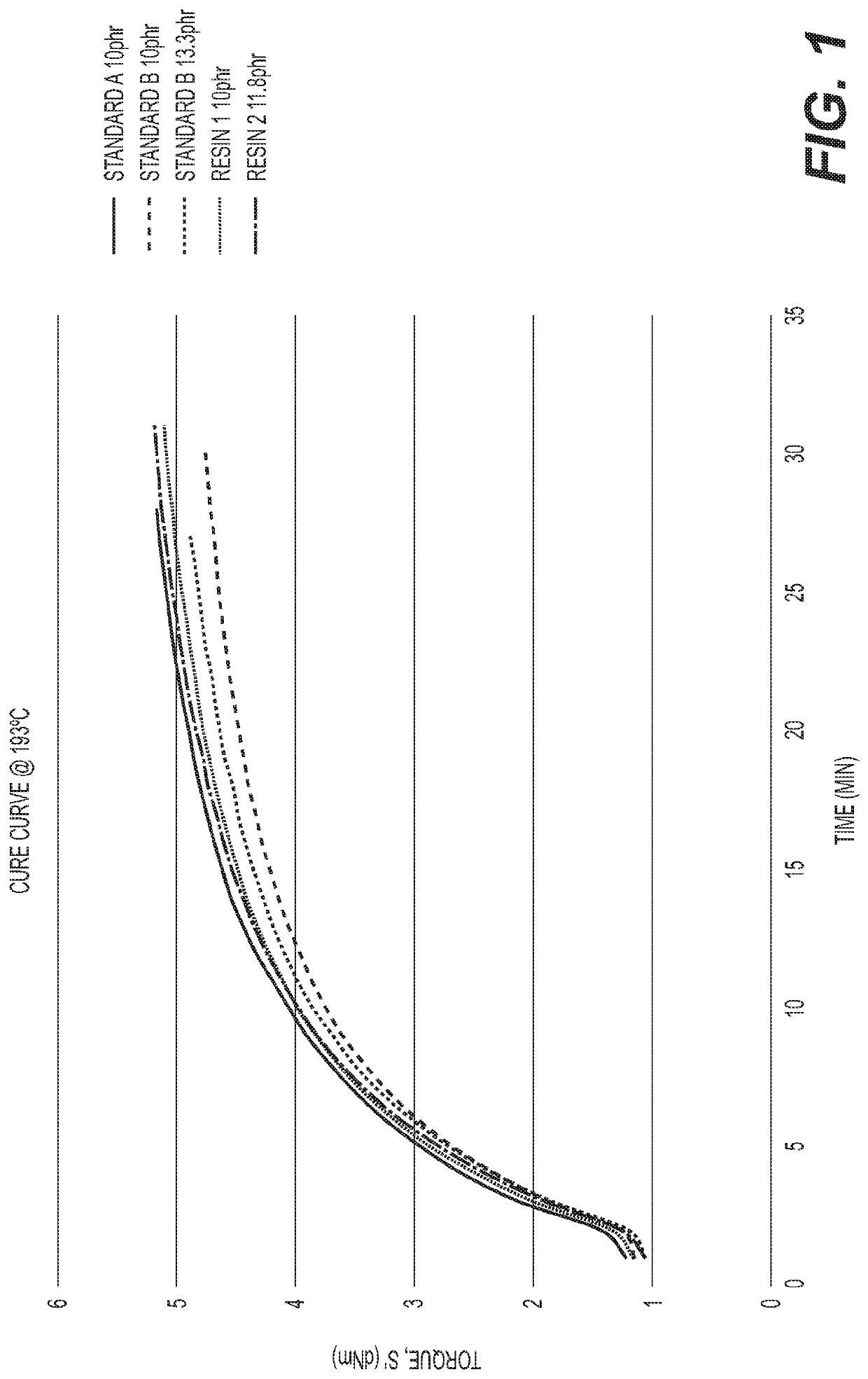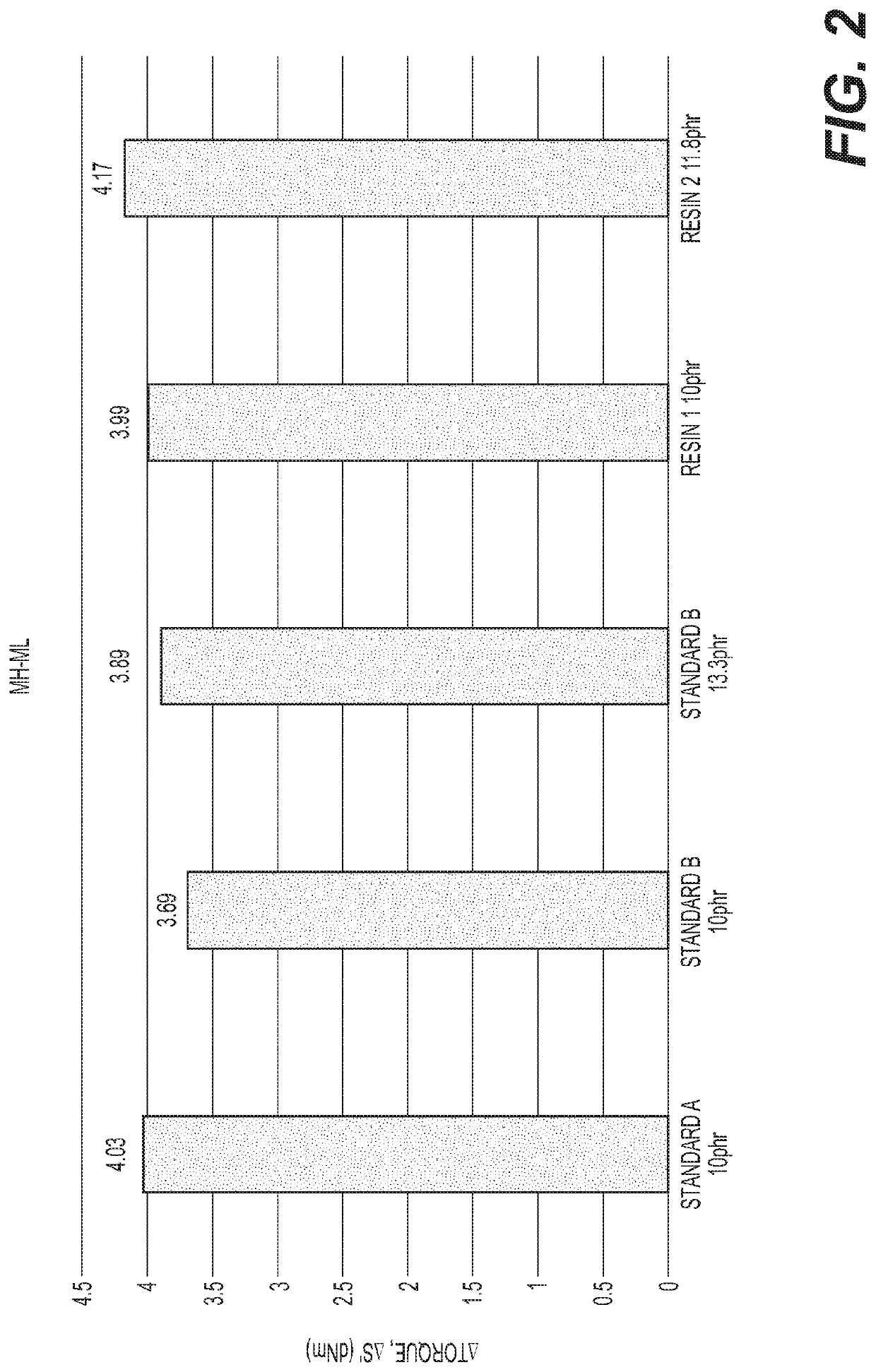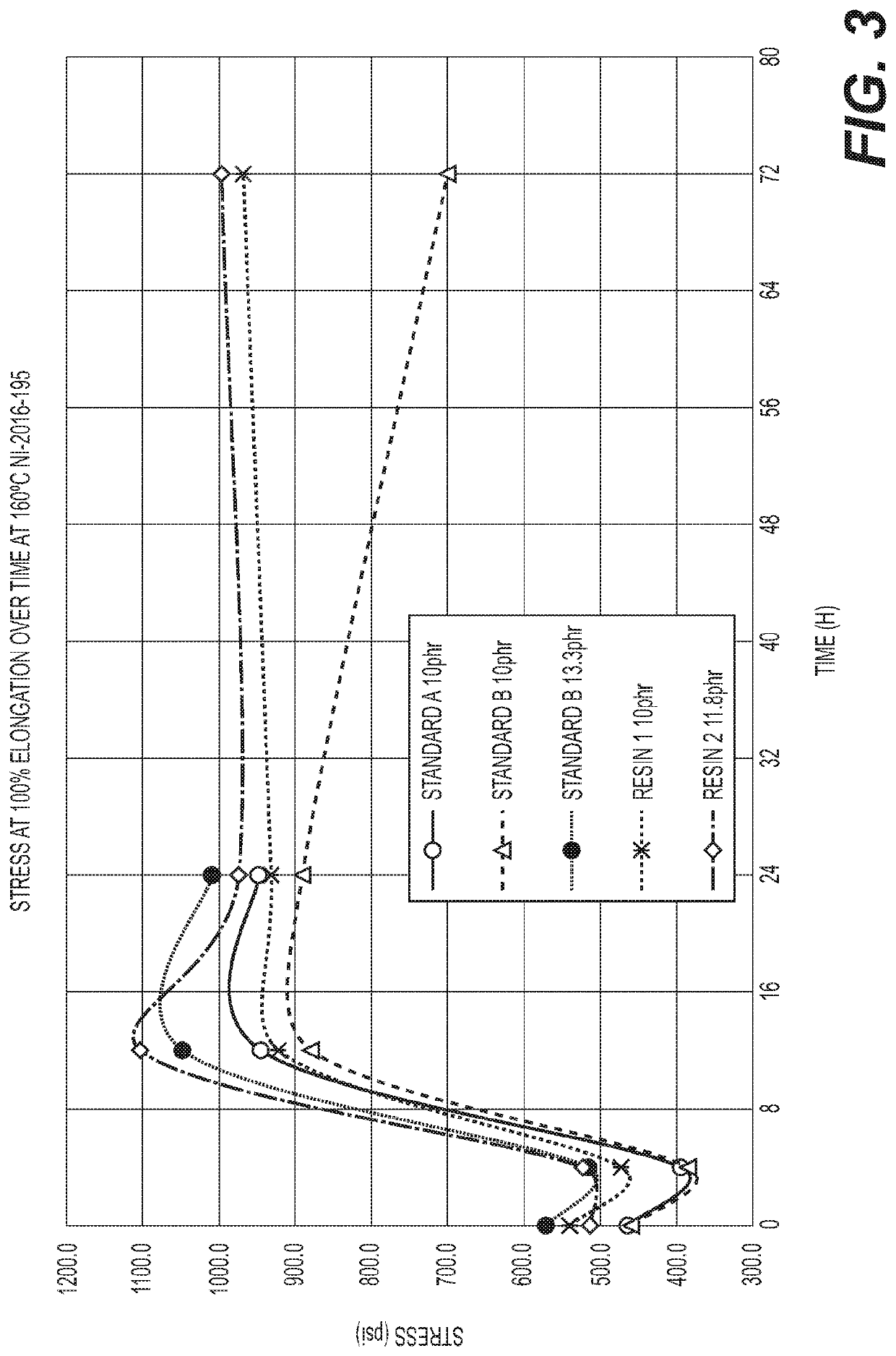Resins having a high methylol to dibenzyl ether ratio and methods of making the same
a technology of methylol and dibenzyl ether, which is applied in the field of resins having a high methylol to dibenzyl ether ratio, can solve the problems of high methylol content resins, difficult to synthesize, and easy to increase condensation reactions, so as to increase the thermal stability of rubber compounds and improve the thermal stability
- Summary
- Abstract
- Description
- Claims
- Application Information
AI Technical Summary
Benefits of technology
Problems solved by technology
Method used
Image
Examples
example 1a
se-Catalyzed Resin Synthesis Process
[0062]Resins were synthesized via a base catalyzed process. In the first stage, the alkylphenol, such as para-tert-octylphenol (PTOP), was reacted with formaldehyde in a presence of a basic catalyst, such as sodium hydroxide. The reaction was carried out under reflux conditions. Upon consumption of the formaldehyde the water generated in the reaction was azeotropically distilled and after that the reaction was cooled to 60° C. More formaldehyde was added and the reaction was continued until most of the formaldehyde was consumed. The catalyst was quenched with an acid, such as sulfuric acid. This was followed by an extraction after which the aqueous phase was removed. The organic phase was washed with water and aqueous phase was removed once again. This was followed by a second azeotropic distillation at 60° C. and vacuum to remove any remaining water, followed by a vacuum distillation to adjust the percent solids of the condensate solution to 60%....
example 1b
d Base-Catalyzed Resin Synthesis Process
[0063]PTOP (330.0 g; 1.60 mol) and xylene (212.0 g; 2.00 mol) were loaded into a reaction kettle and heated to 98-103° C. The reaction was stirred until PTOP was fully dissolved, whereupon 50% caustic soda (32.0 g; 0.40 mol) was added and the temperature was observed to increase by ˜20° C. The reaction was stirred until the caustic soda dissolved, at which point 50% formaldehyde (52.80 g; 0.88 mol) was added at a temperature of 98-103° C. over approximately one hour. The batch was observed to start refluxing upon addition of formaldehyde. The temperature was held for one hour and monitored for free formaldehyde. If needed, the reaction was allowed to continue until the formaldehyde was consumed.
[0064]The water was azeotropically distilled off at a typical temperature of 145° C. The batch was cooled to 50-60° C. and additional formaldehyde was added over about 1.5-2 hours. The reaction was held at 60° C. until the free formaldehyde content was ...
example 1c
id Catalyzed Resin Synthesis Process (Prophetic)
[0069]Resins are synthesized via an acid-catalyzed process. In the first stage, the alkylphenol, such as para-tert-octylphenol (PTOP), is reacted with formaldehyde in a presence of an acid-catalyst, such as dodecylbenzene sulfonic acid. The reaction is carried out under reflux conditions. Upon consumption of the formaldehyde, the water generated in the reaction is azeotropically distilled and after that the reaction is cooled to 60° C. The acid-catalyst is neutralized with a suitable base such as NaOH, and more formaldehyde is added and the reaction is continued until most of the formaldehyde is consumed. The reaction is quenched with an acid, such as sulfuric acid. This is followed by an extraction after which the aqueous phase is removed. The organic phase is washed with water and aqueous phase is removed once again. This is followed by a second azeotropic distillation at 60° C. and vacuum to remove any remaining water, followed by a...
PUM
| Property | Measurement | Unit |
|---|---|---|
| temperature | aaaaa | aaaaa |
| temperature | aaaaa | aaaaa |
| temperatures | aaaaa | aaaaa |
Abstract
Description
Claims
Application Information
 Login to View More
Login to View More - R&D
- Intellectual Property
- Life Sciences
- Materials
- Tech Scout
- Unparalleled Data Quality
- Higher Quality Content
- 60% Fewer Hallucinations
Browse by: Latest US Patents, China's latest patents, Technical Efficacy Thesaurus, Application Domain, Technology Topic, Popular Technical Reports.
© 2025 PatSnap. All rights reserved.Legal|Privacy policy|Modern Slavery Act Transparency Statement|Sitemap|About US| Contact US: help@patsnap.com



